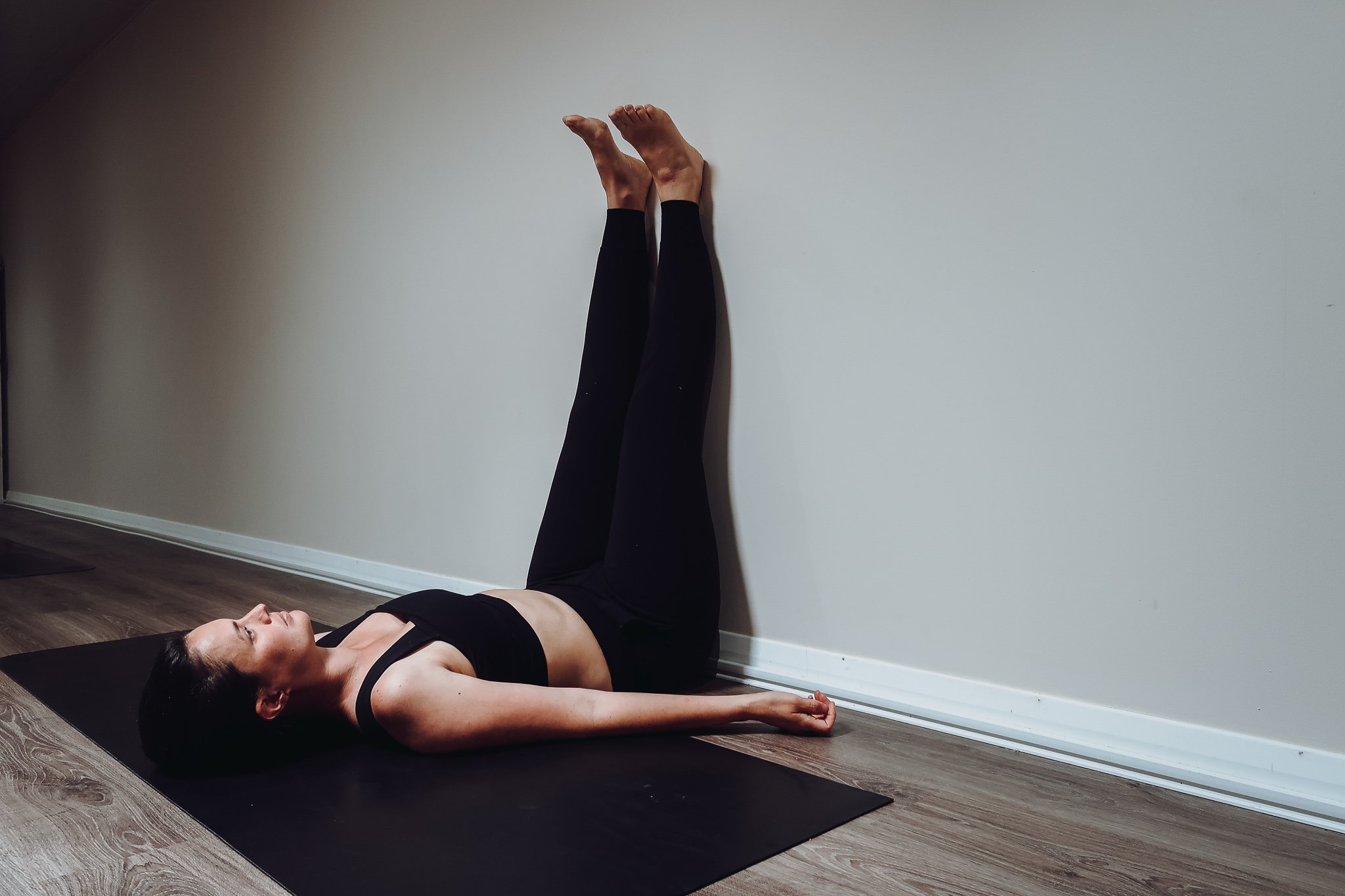If you only have 5 minutes to do some yoga then do this...
In Yin yoga, we utilise the wall for some poses to help with support and comfort. Putting your legs up the wall, also known as Wall Caterpillar in yin yoga, has many benefits for your sleep and nervous system. Here are some of them:
Improved blood flow: When you put your legs up the wall, gravity helps to improve blood flow and circulation in your legs and feet. This can help to reduce swelling and fatigue in your lower extremities.
Reduced stress and anxiety: Inverted poses like legs up the wall activate the parasympathetic nervous system, which is responsible for the "rest and digest" response. This can help to reduce stress and anxiety levels and promote relaxation.
Better sleep: The relaxation and stress-reducing benefits of putting your legs up the wall can also help you to sleep better at night. It can help to calm your mind and reduce racing thoughts that may keep you up at night.
Improved digestion: By activating the parasympathetic nervous system, legs up the wall can also help to improve digestion and relieve digestive issues like constipation and bloating.
Reduced inflammation: Elevating your legs can help to reduce inflammation in your body, which is beneficial for your overall health and well-being.
Overall, putting your legs up the wall is a simple yet powerful practice that can have many benefits for your sleep and nervous system. It is easy to do and can be done anywhere, making it a convenient practice to incorporate into your daily routine. I would recommend doing at least 5 minutes if you can and for days when you have more time have the legs up for up to 20 minutes. You can start out with the legs up for a couple of minutes. In the event of feeling any side effects that you can experience in this pose can include pins and needles / tingling sensation in the legs due to decreased blood flow. In those instances lower the legs and sit up slowly in your own time. Those with high blood pressure or glaucoma should do this pose slowly or avoid it if it doesn’t feel ok.
I personally try to do 5 minutes of this pose before bed most days as it helps me settle into sleep faster and I can do it whilst laying on my bed. So there are no excuses for me not to do it. Variations can include using a bolster or pillows along the spine to elevate the back, taking the hips a bit further away from the wall and either placing the hands on the belly or along side the body.


